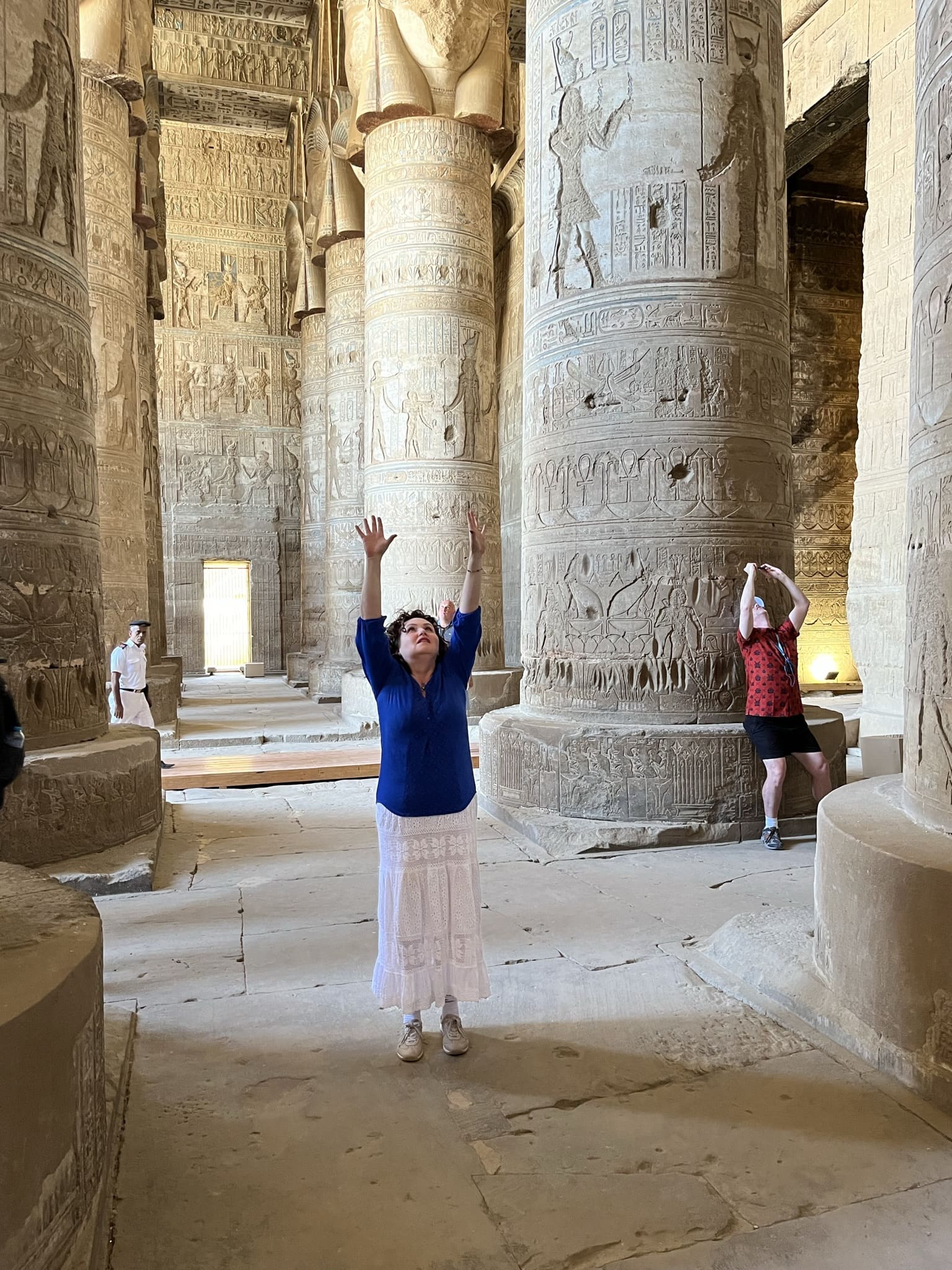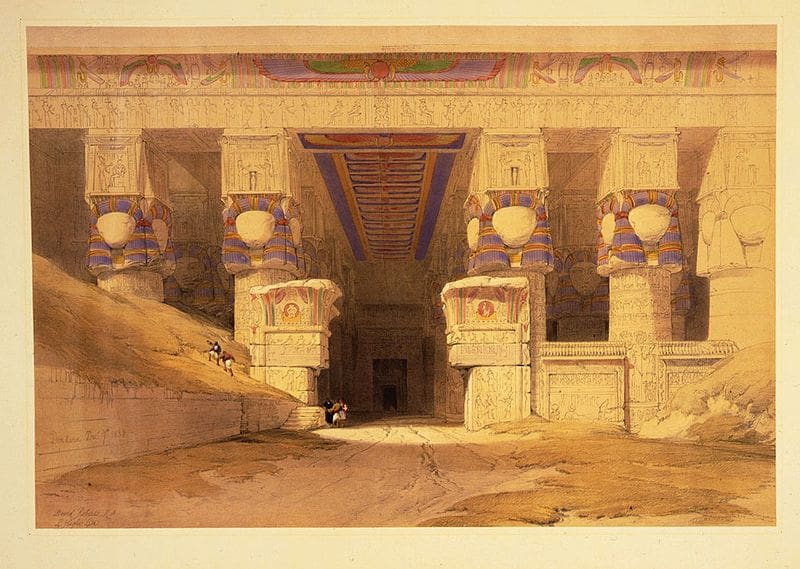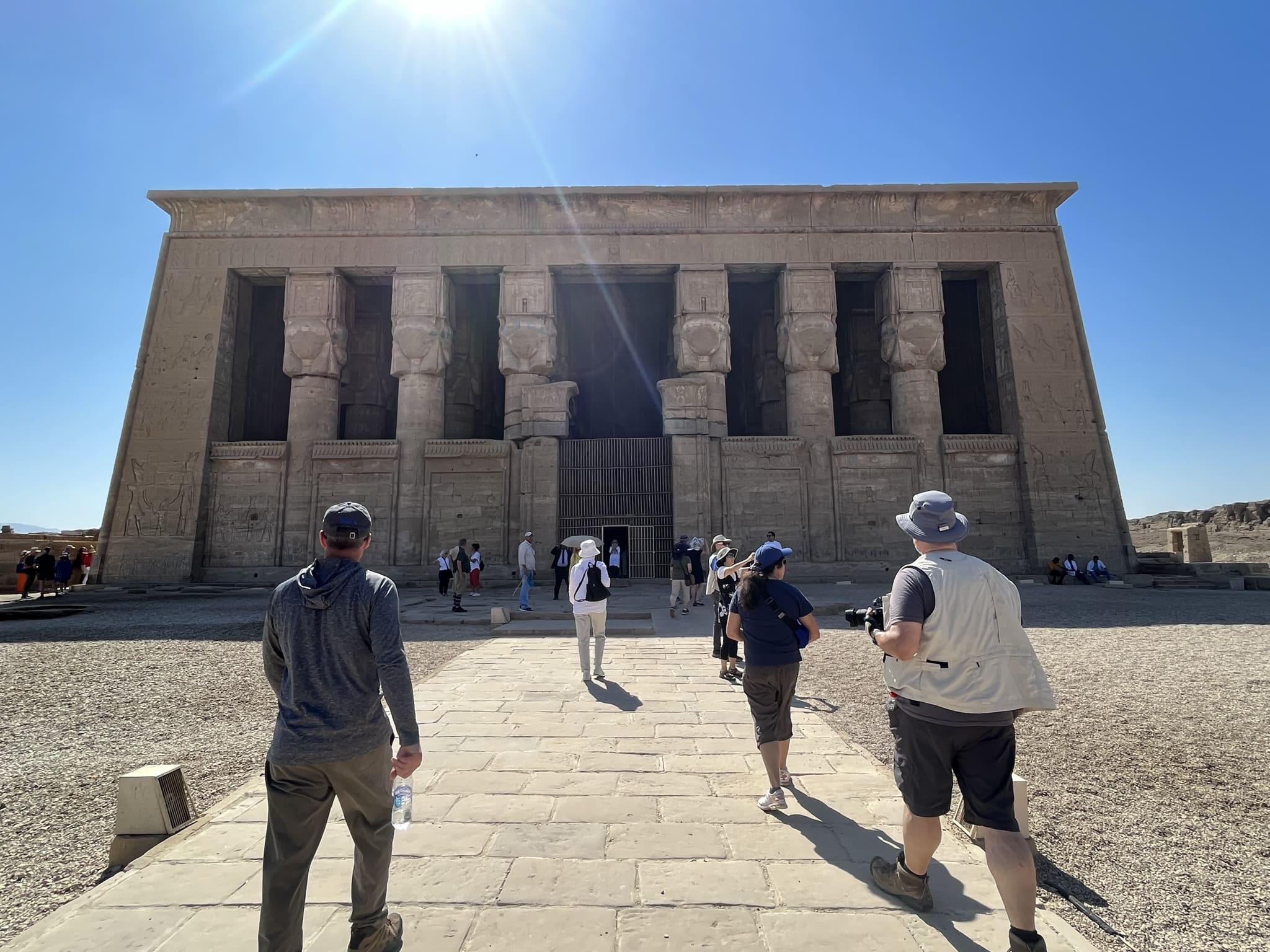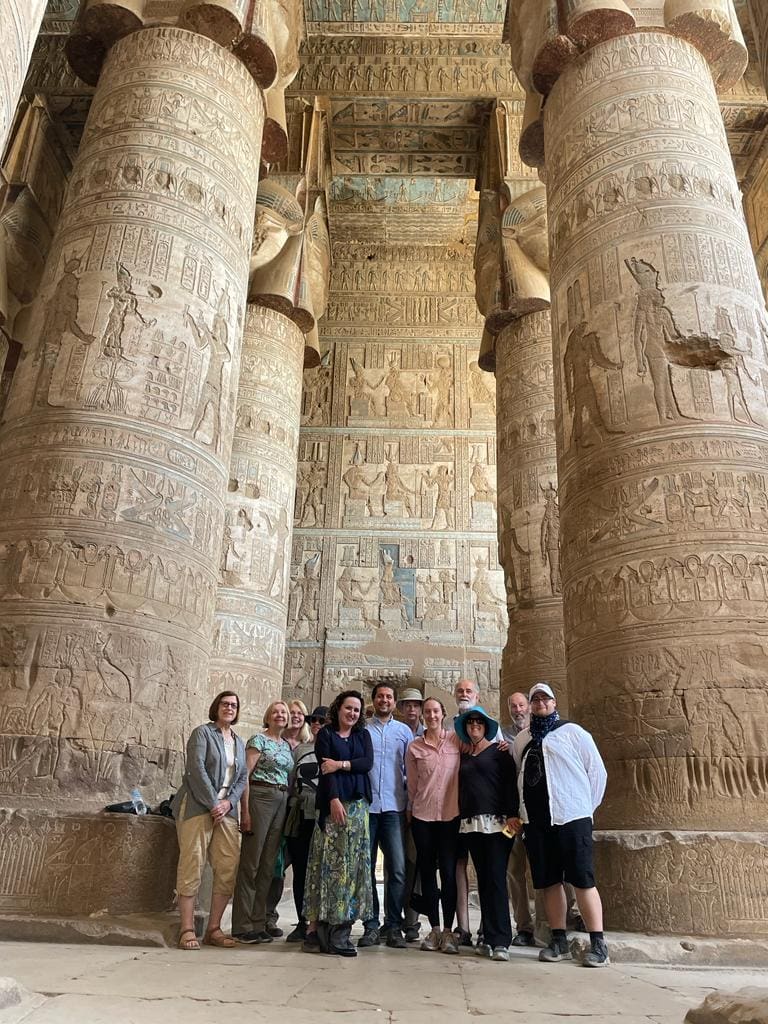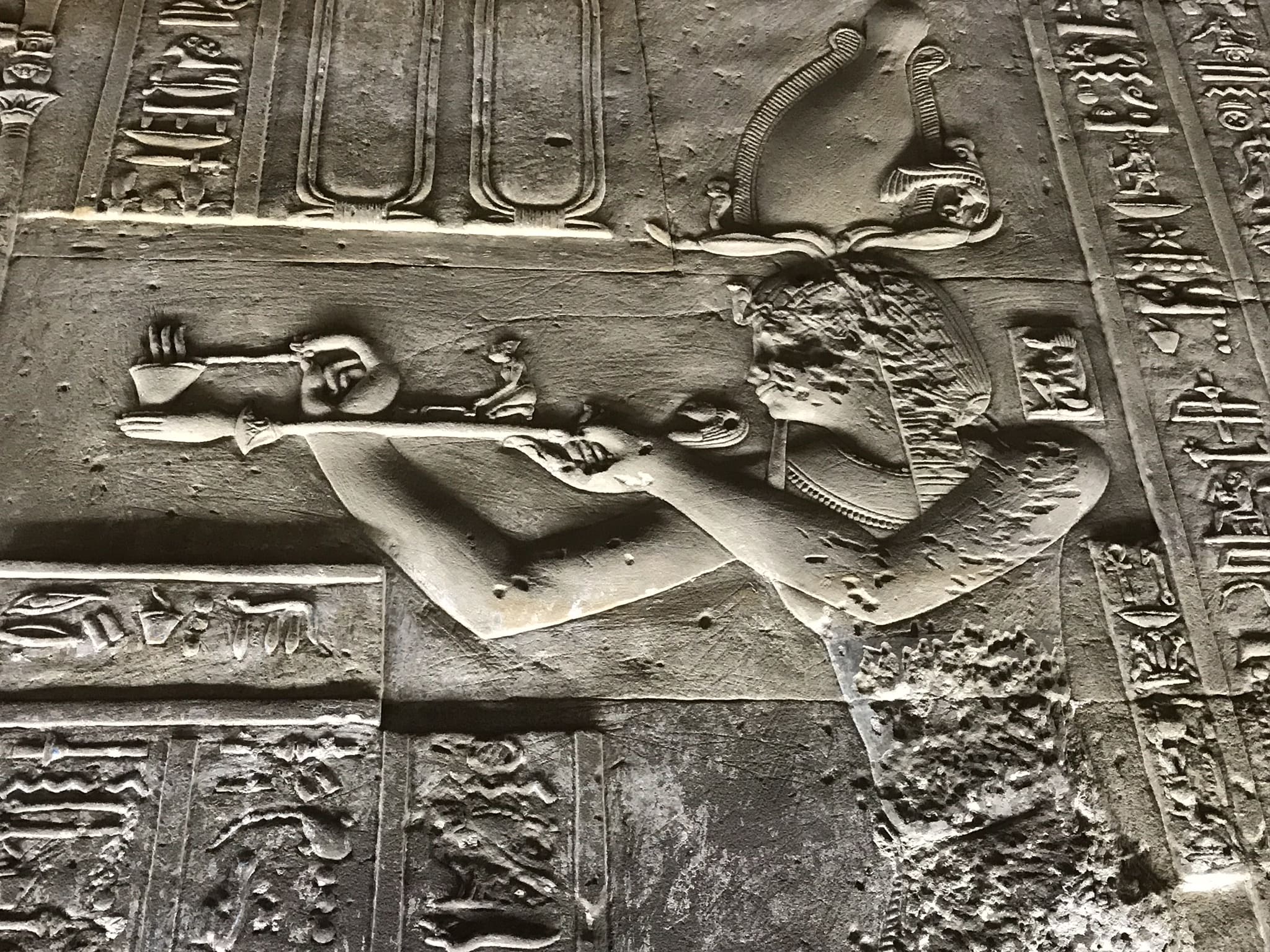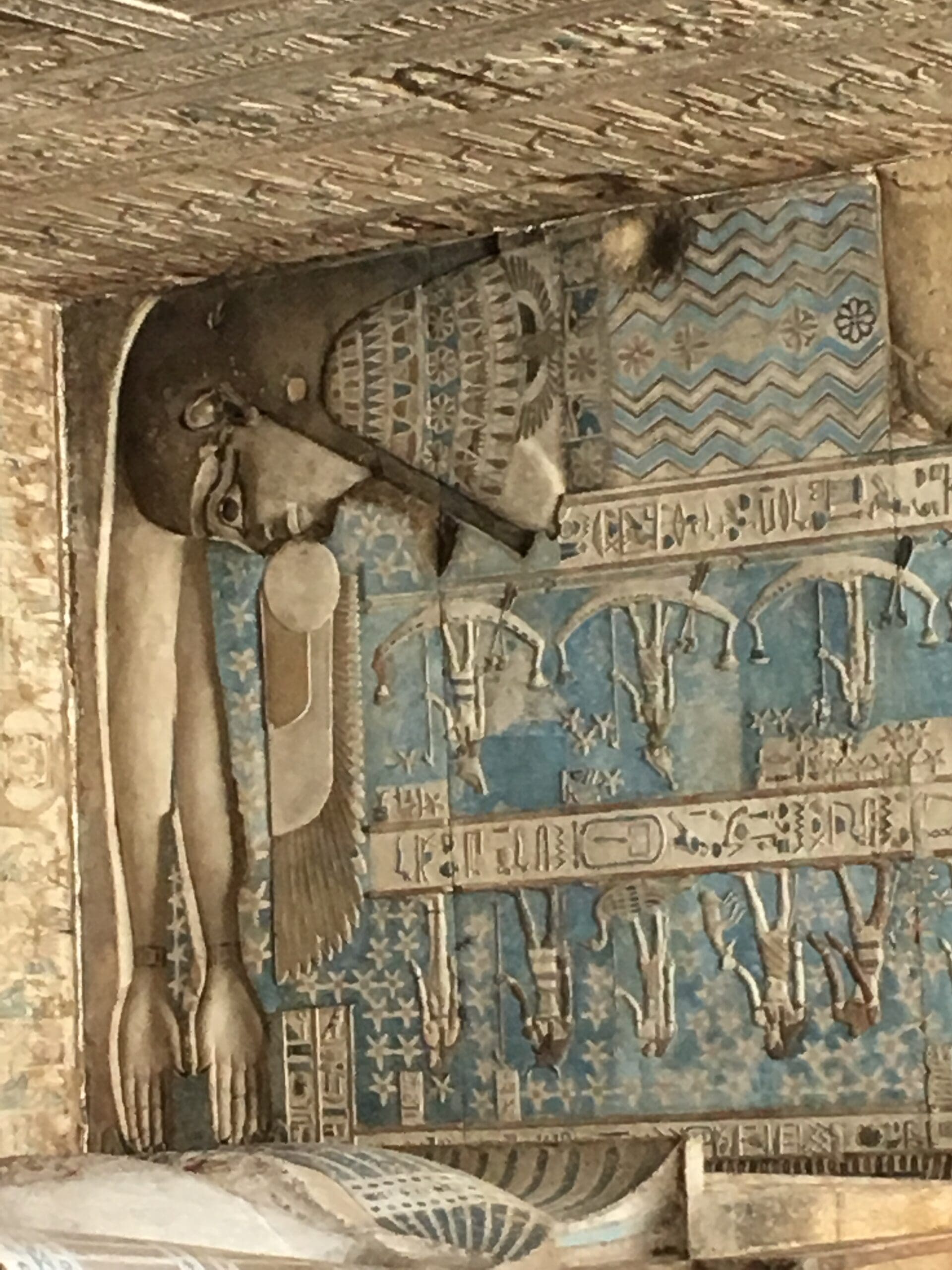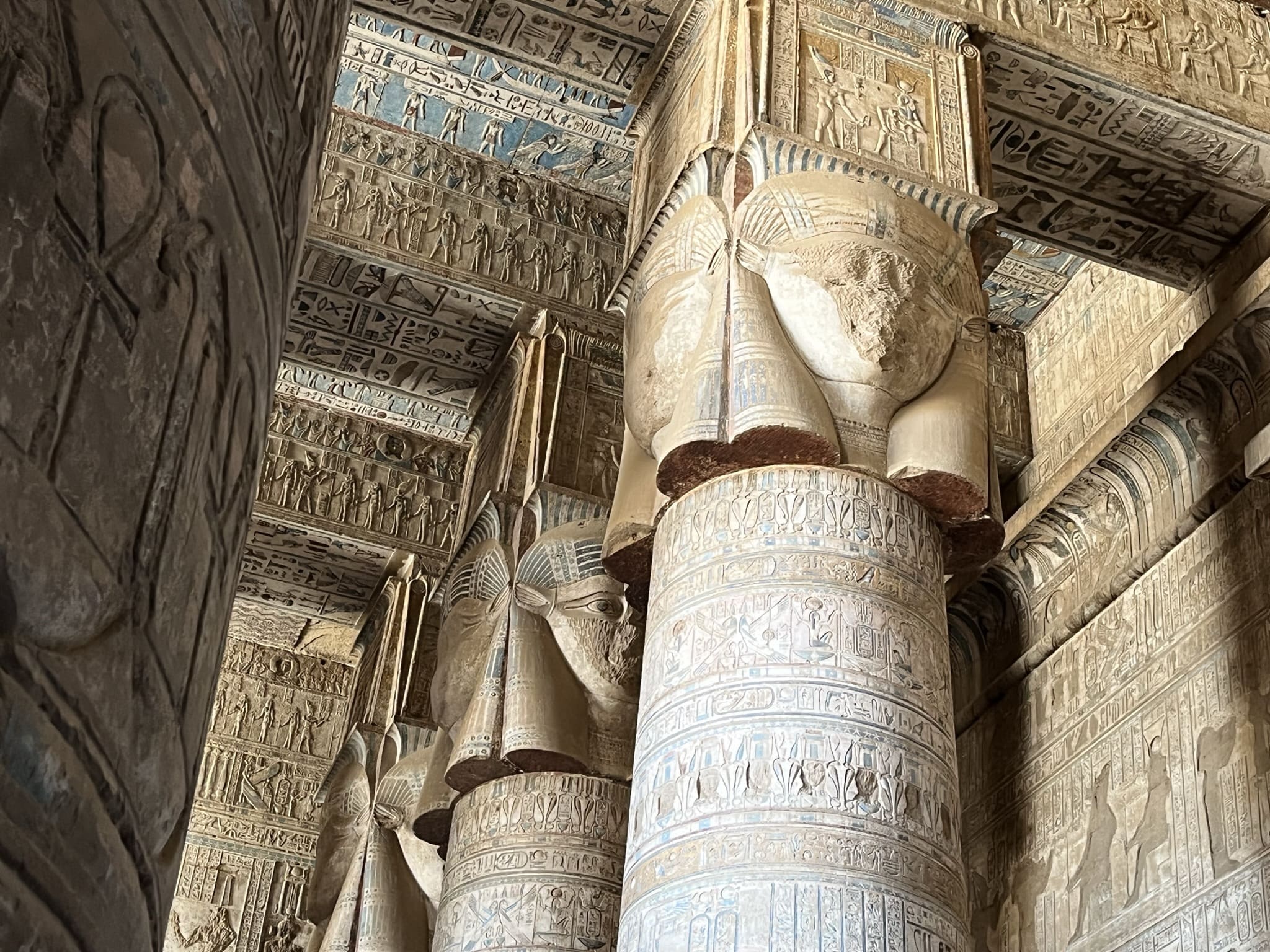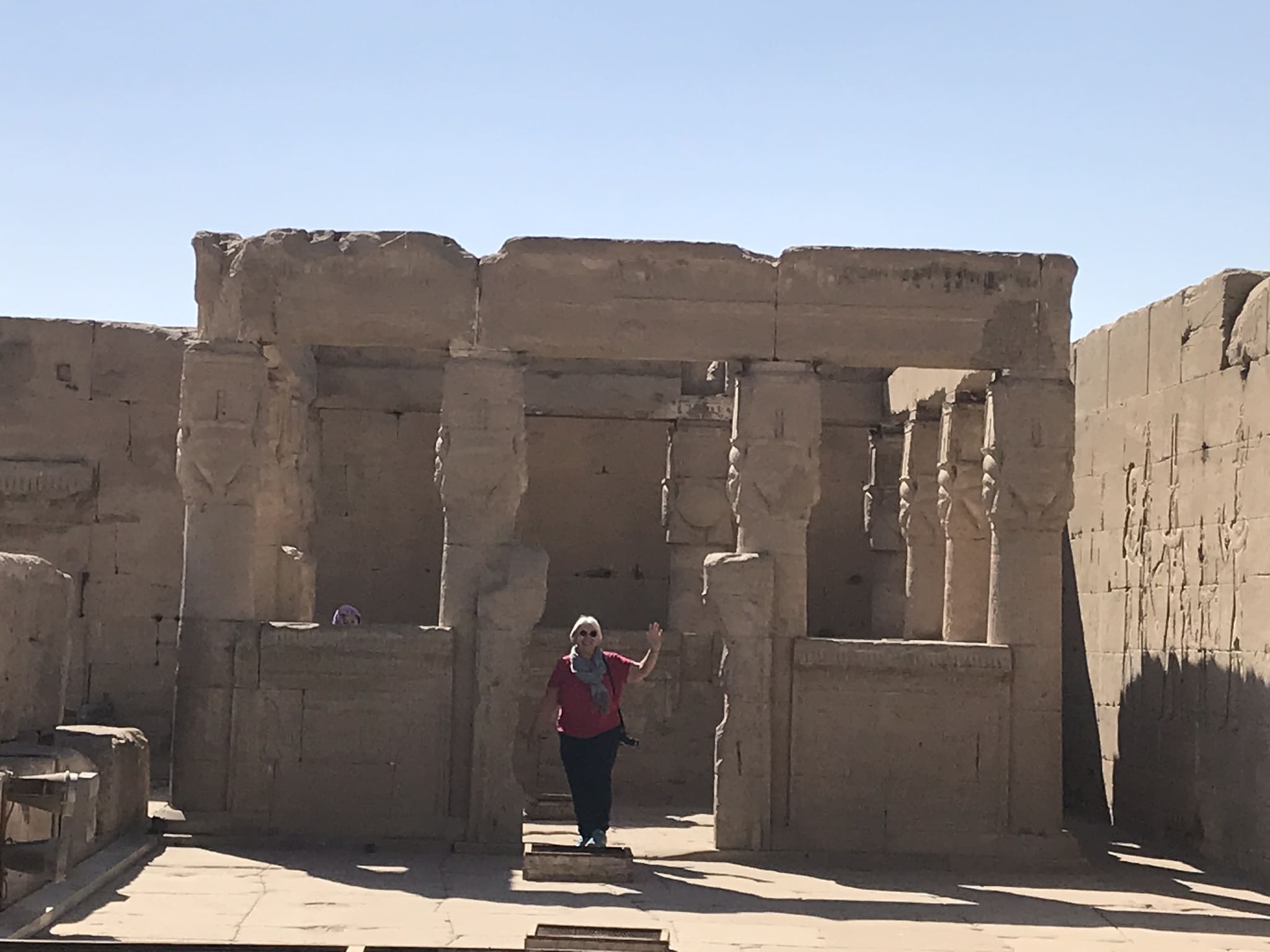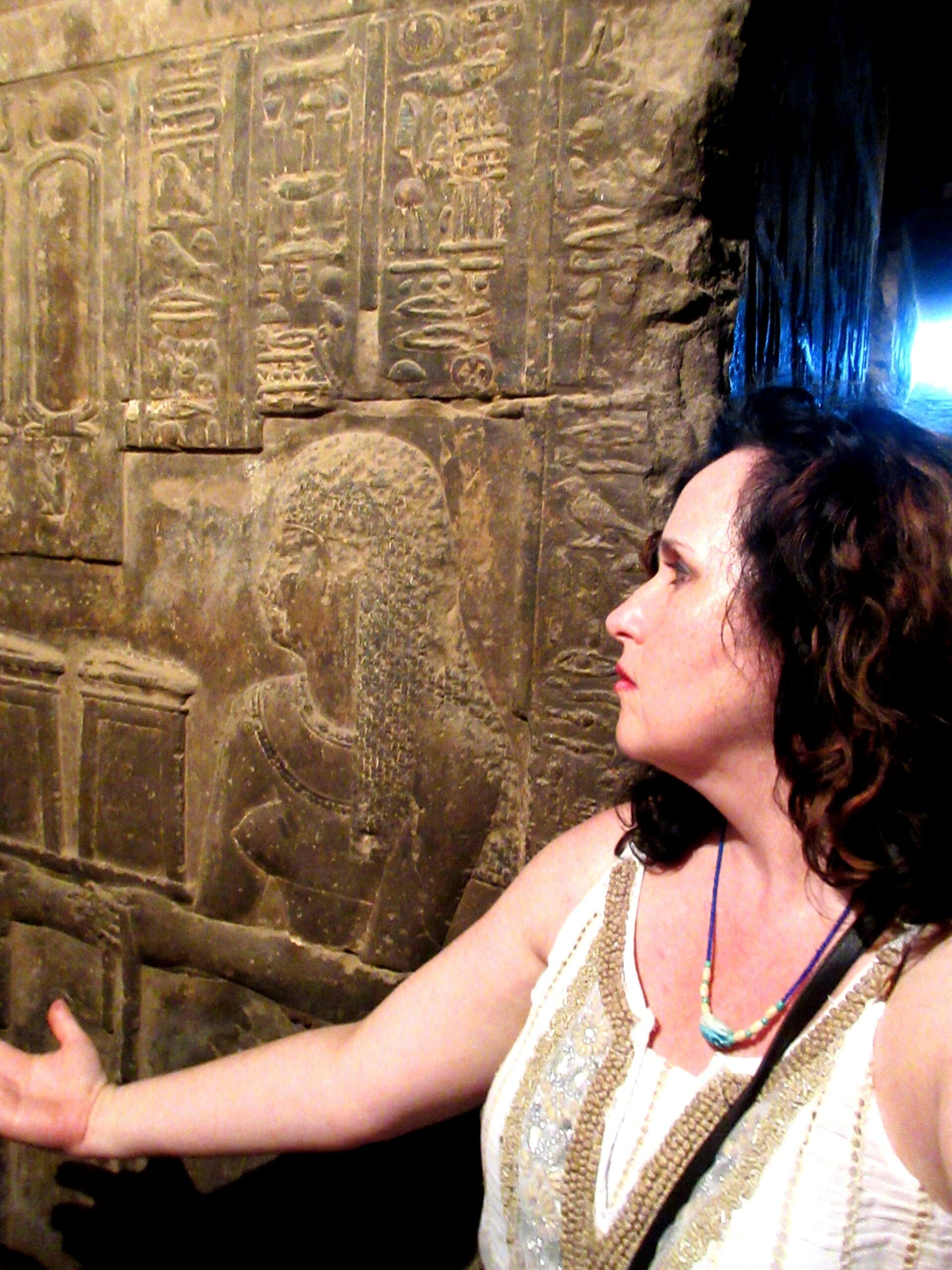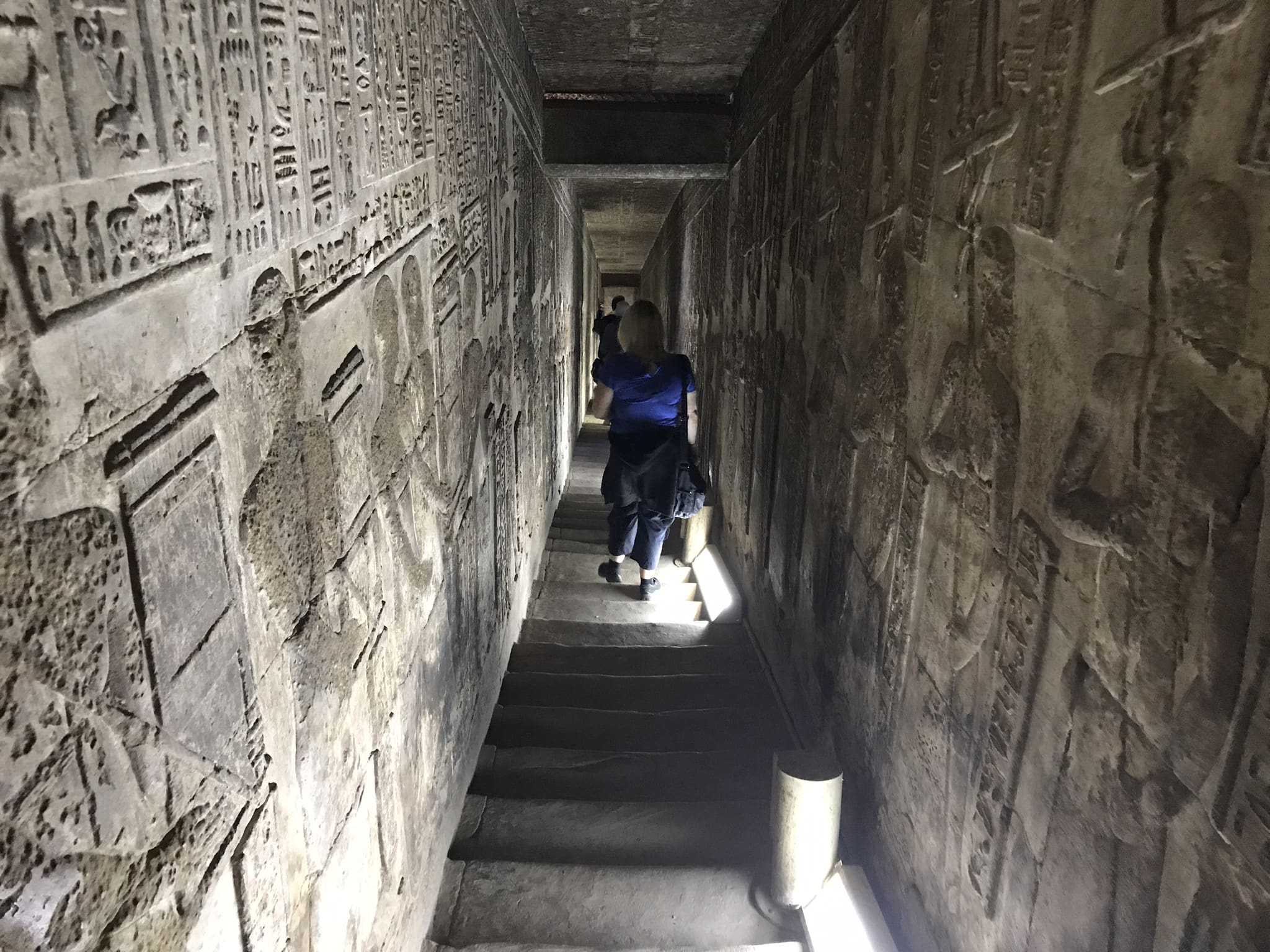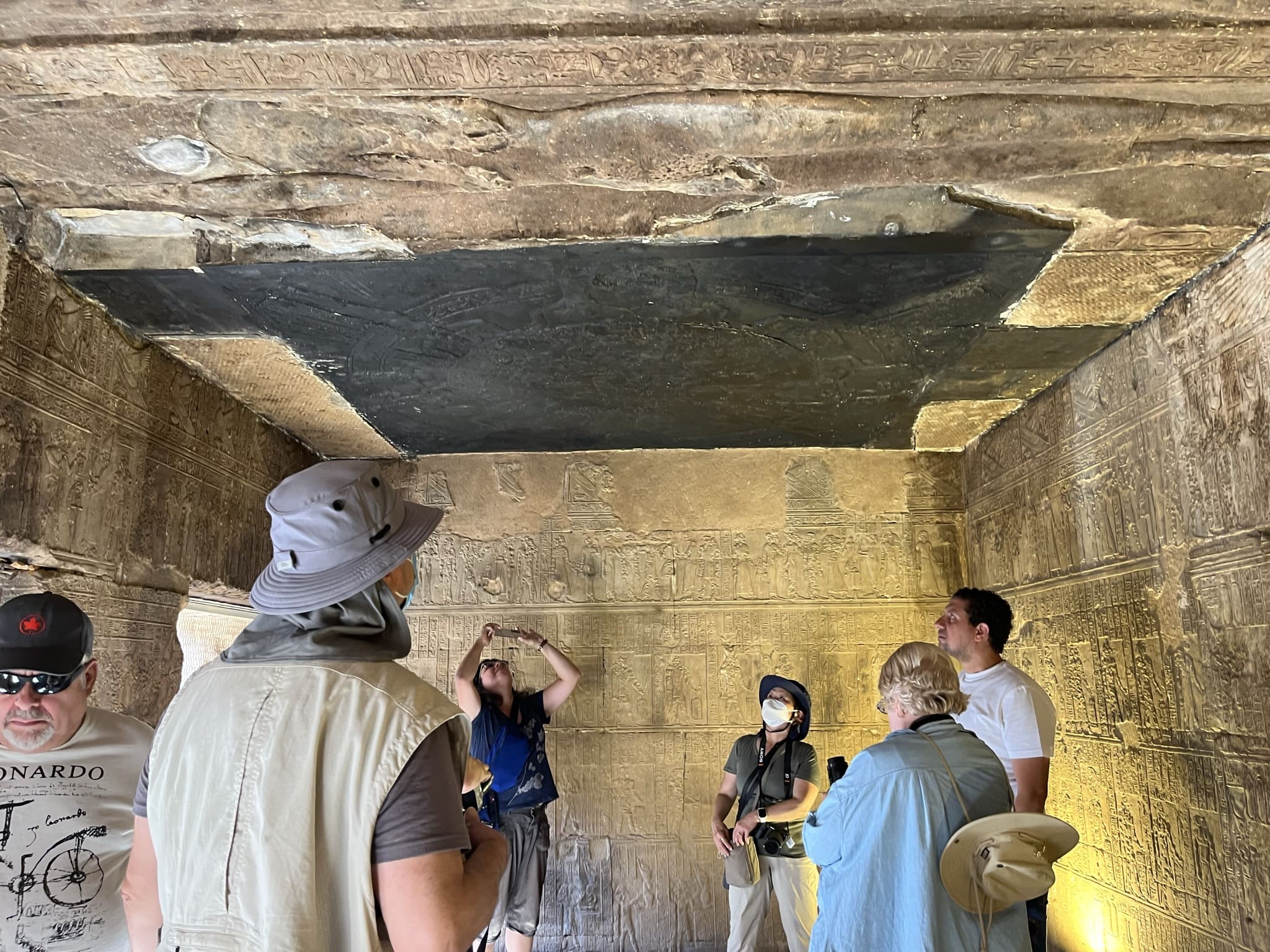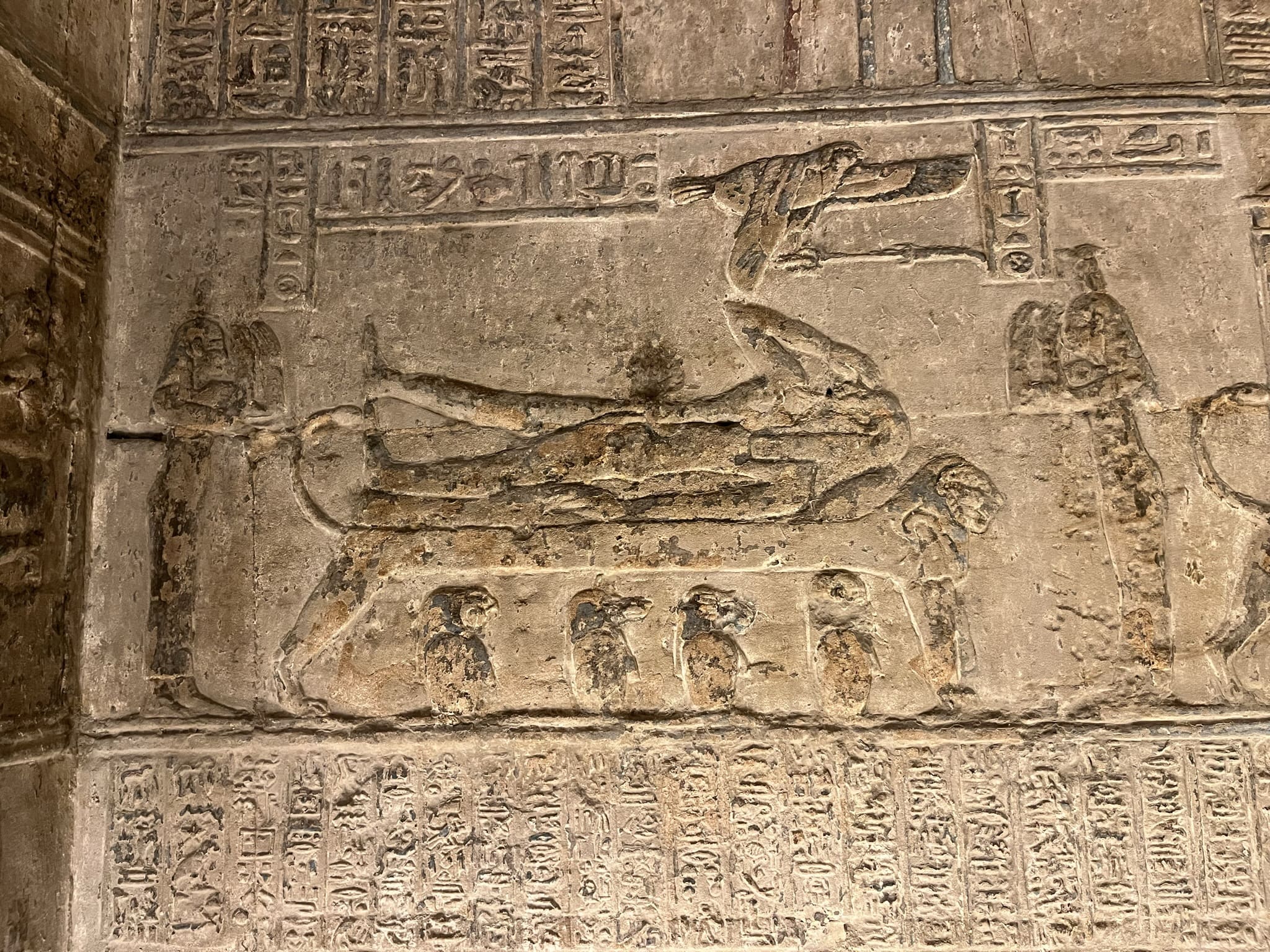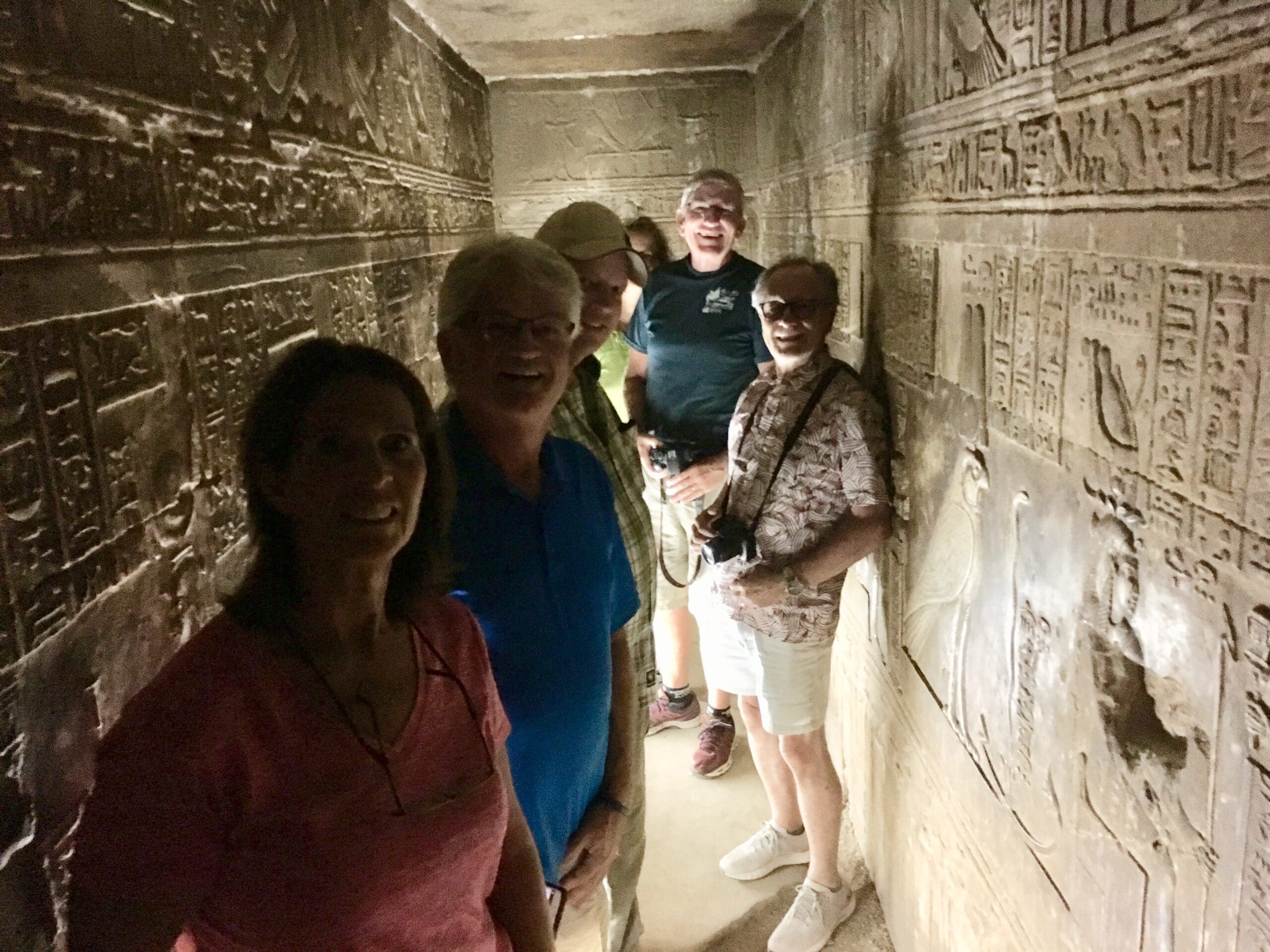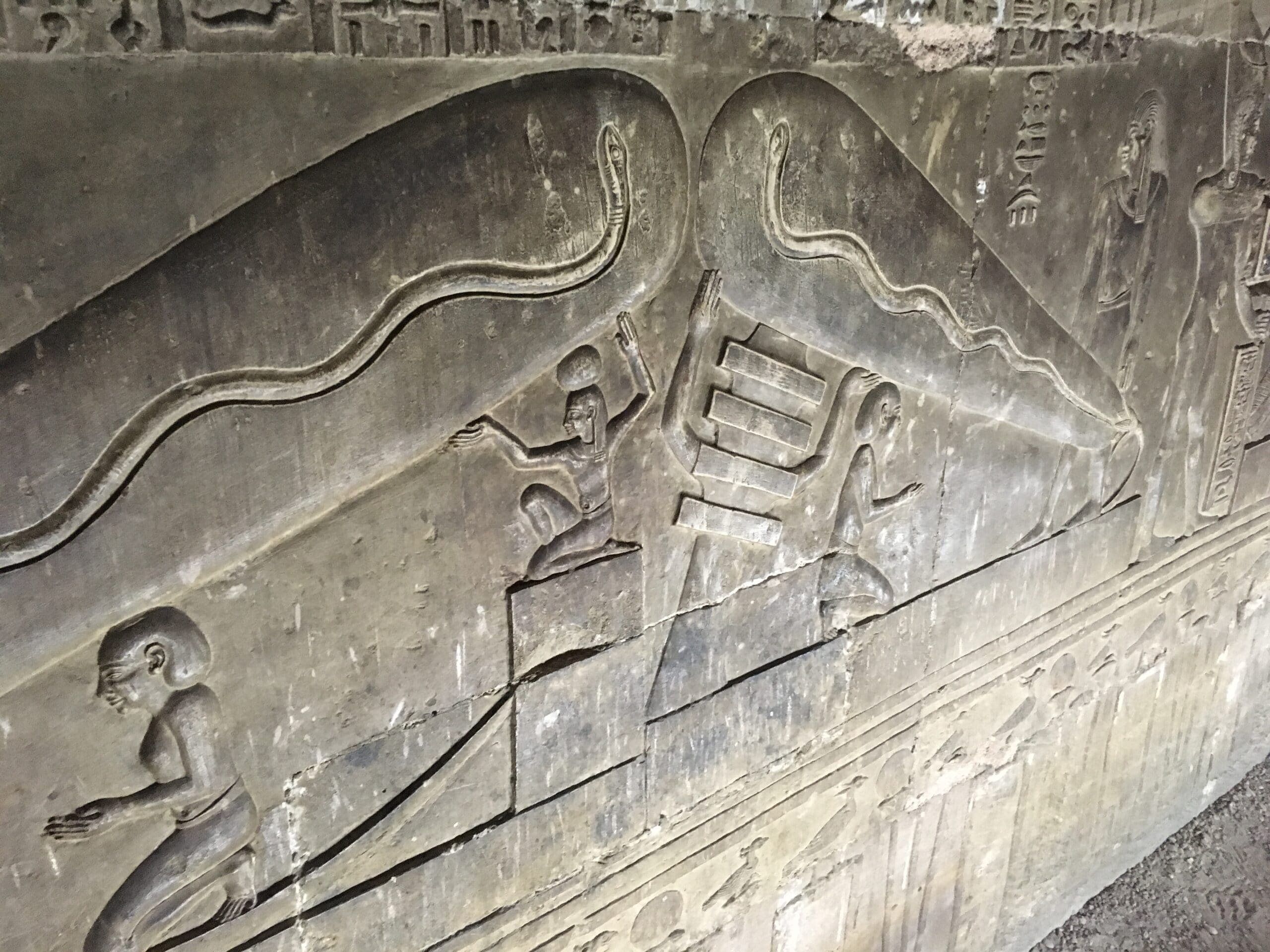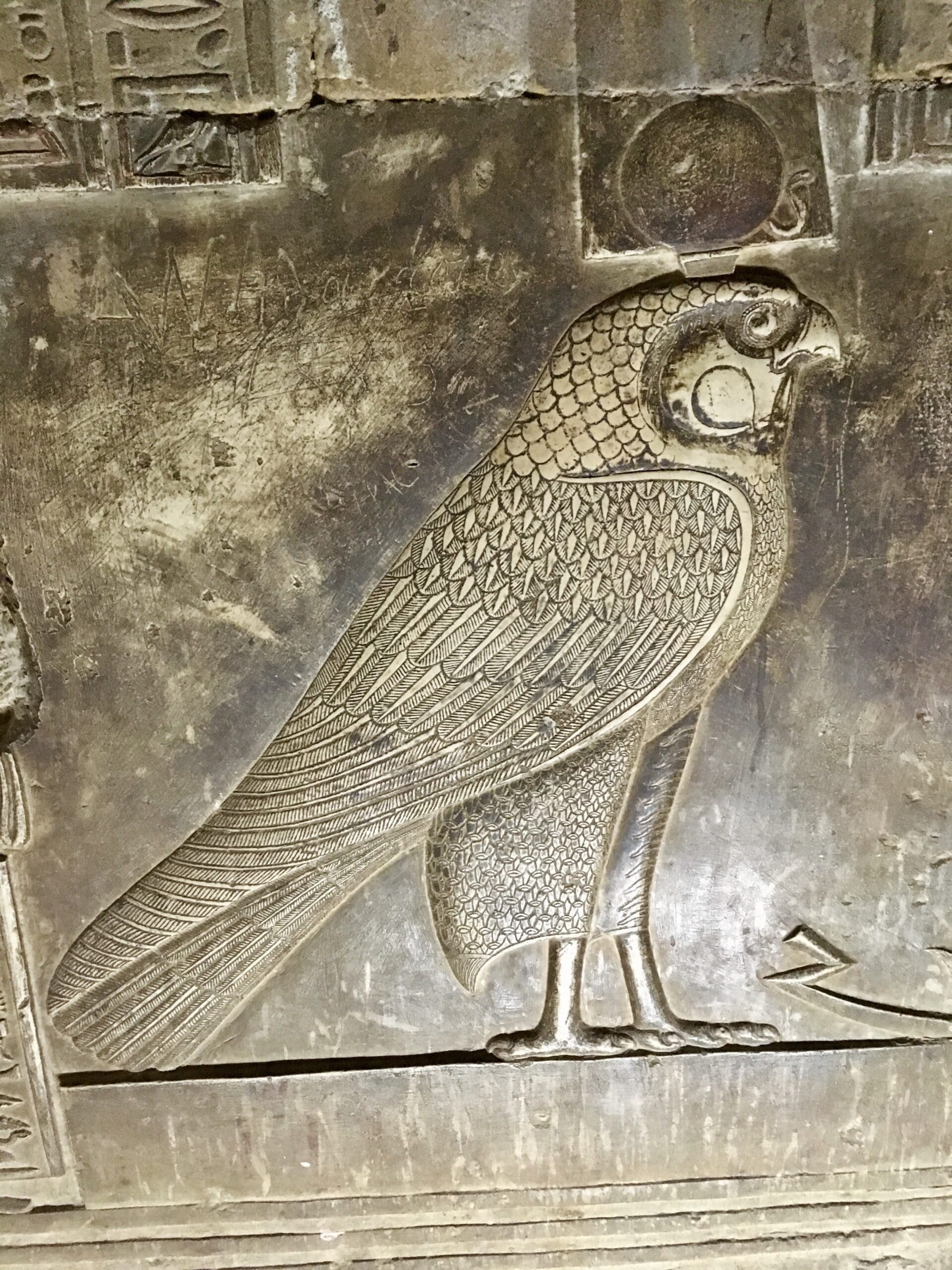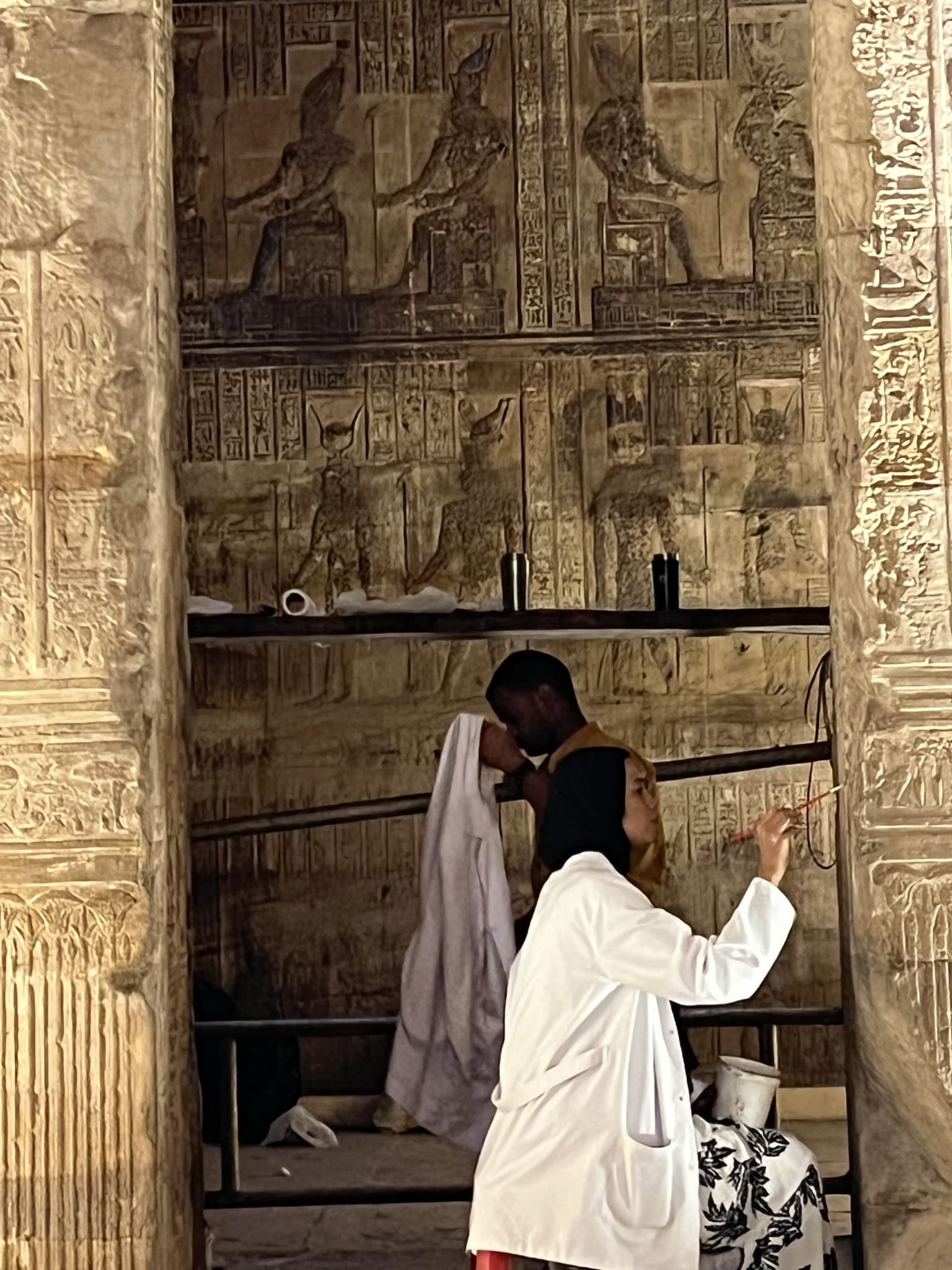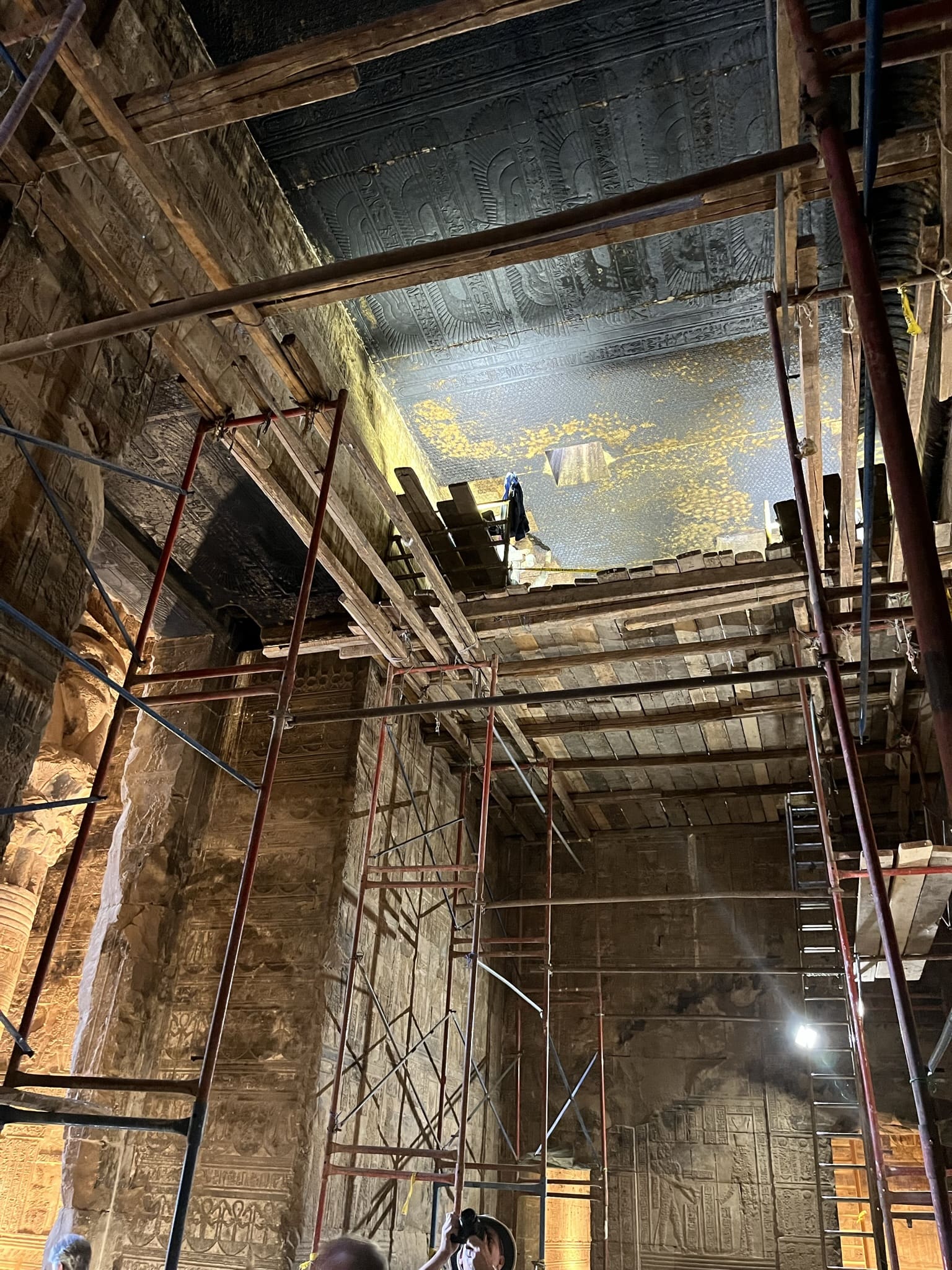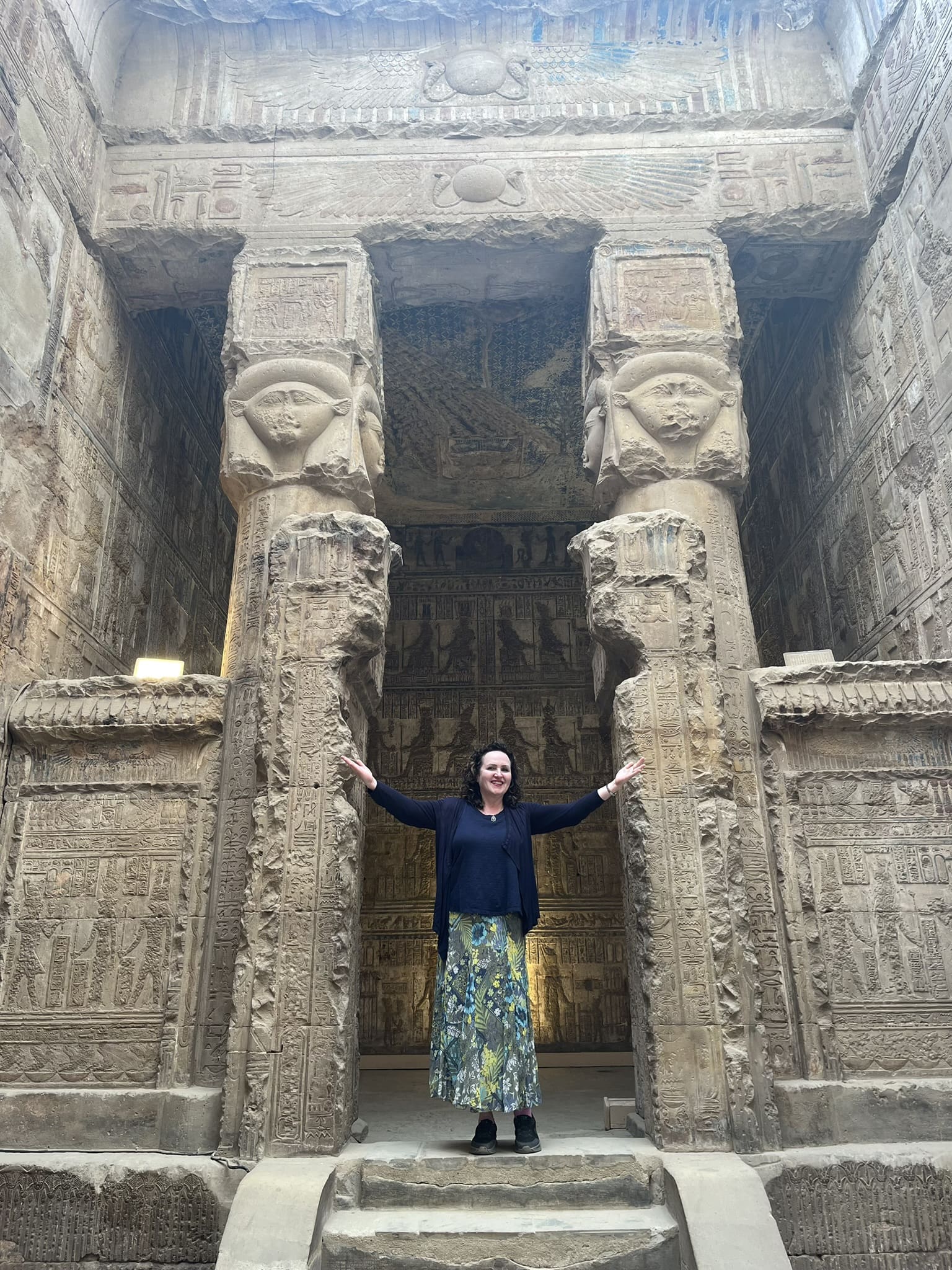by Laura Ranieri Roy
“I felt that I was in the sanctuary of the arts and sciences…Never did the labour of man show me the human race in such a splendid point of view. In the ruins of Tentyra [ Roman for Dendera] the Egyptians appeared to me giants.” Vivant Denon, French writer, artist and leading Savant of the Napoleonic Mission to Egypt, 1798-1801
Denon was the first artist to discover and draw the temples and ruins of Upper Egypt. And the first Westerner to “wax poetic” about the beautiful temple of Denderah, then partially covered in sand, continues to awe and inspires visitors to this day.
Prior to his pioneering expedition south, the only known antiquities were pyramids, colossal statues, and stelae. When Denon and his team arrived at Dendera in 1802 – Middle Egypt, about 450 km south of Cairo, he was spellbound by what he saw. The partially buried temple still shrouded in sand, captured his imagination and revealed a treasure trove of ancient artifacts preserved to this day. Denon’s pioneering spirit, early account, and unwavering dedication to uncovering the mysteries of the past inspired countless who followed in his footsteps.
More than 200 years after Denon and David Roberts, the Scottish artist who came in the 1830s, visitors to Denderah are still enthralled. Ask anyone who has ventured to this temple in recent years whether they have seen a site more beautiful from pillar to ceiling, from decorated crypt to rooftop shrine. The answer will likely be no. It is certainly my personal favourite temple in Egypt.
With its spectacular blue ceilings bedecked with the goddess Nut and astronomical scenes, those gorgeous Hathoric columns, the many rooms and chambers (dedicated to Hathor’s attributes: the Menat necklace and sistrum rattle) all elaborately decorated with ancient Egyptian scenes rendered in Greco-Roman style – and its amazing Mammisis, crypts, well-worn winding staircases, preserved rooftop shrine and Osiris resurrection room, there is simply no place like it!
Denderah: A Great Temple above other Temples
Its sister temple, the Temple of Edfu, dedicated to the Hawk god Horus, shares its grandeur. Arguably, Edfu is the best-preserved temple in Egypt, with its impressive first pylon and well conserved reliefs and temple features. And yet there is a beauty at Denderah it cannot match. The Seti Temple at Abydos too has the most elegantly carved reliefs of all, those seven chapels (the best in Egypt)… and a palpable spirit within.
And yet… there is a special something about Denderah!
Here are five secrets you may not know about this wonder of Egypt.
Ptolemaic wonder – Greek and Roman Egyptophiles on sacred ground.
Although evidence of earlier temples have been found on this sacred ground, no Pharaonic ruler from the Old, Middle or New Kingdom can be credited with the current structures you see today at Denderah. The standing buildings all date to Ptolemaic and Roman times with just one exception: the one crumbling Mammisi raised by Nectanebo II, the last native Pharaoh of Ancient Egypt, between 360-343 BC.
The Denderah temple is a testament to the power and influence of Cleopatra’s family, the Ptolemies. These rulers were known for their love of Egyptian culture and religion, although they brought their own Greek-inspired touches to the art. More voluptuous, sensuous ladies, Greek-style clothing and features in the reliefs – and some loose inconsistency with the iconography – multi-headed Anubis, Maat with extra feathers, etc.… And yes, the Romans, (or those great Egyptians artists under their rule), also deserve tremendous credit for its most beautiful areas.
2. Cleopatra VII’s Temple – built by her dad.
Construction of the current temple started under Cleopatra’s father, Ptolemy XII Auletes (c. 117 – 51 BC). The many empty cartouches bear witness to the dynastic struggle that took place during his reign. Cleopatra’s ambitious older sisters sought to seize control from their father …and Ptolemy fled to Rome with young Cleopatra to garner support from Pompey and Caesar.
In this period of weak rule in Egypt, the inner most part of this great temple was constructed, including its holy shrine and inner chambers. It is believed that Cleopatra and Julius Caesar may have sojourned here during their romantic voyage up the Nile in 48 BCE.
On the back wall of the temple there is a famous relief of Cleopatra VII herself and her son by Caesar, Caesarean. We see two depictions of Caesarean, one as a young child, another of Caesarean’s “ka” (his spirit/double depicted full size). Cleopatra’s great hope was that her little son would become King of Egypt – the Horus (living king) of the fallen Osiris (Caesar). But it was not to be. He was later slain by order of Augustus.
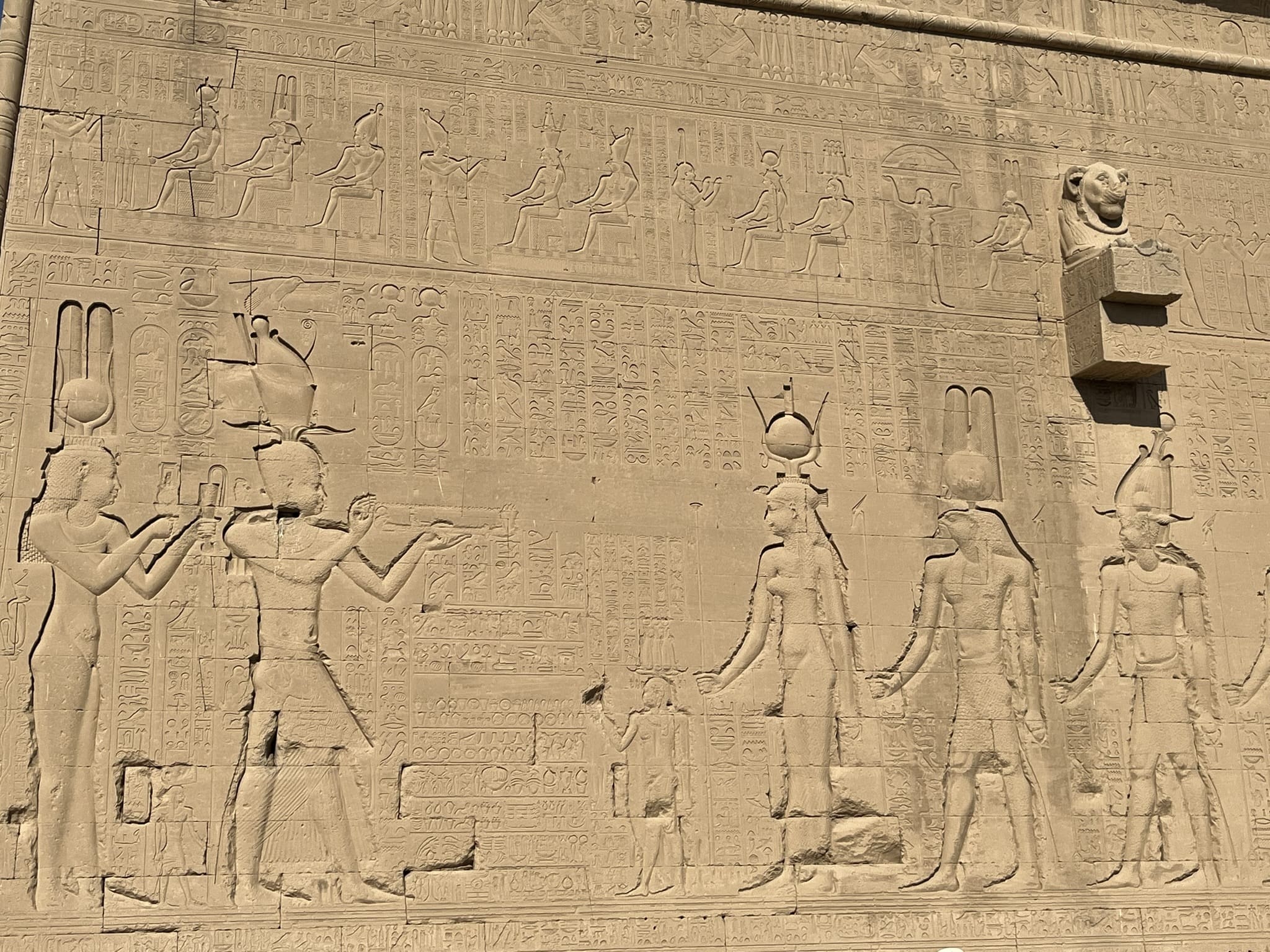
Back wall of Denderah Temple showing Cleopatra VII (far left) behind small Caesarean who is behind larger “ka” of Caesarean
3. Magnificent hypostyle hall & ceiling
The breathtaking highlight of the temple is the elaborately decorated hypostyle hall supported by 24 Hathor sistrum columns. The columns are not simply a depiction of the cow goddess Hathor, lady of the turquoise, love and beauty – but of the goddess’s face on a magical rattle (sistrum – her special attribute) used in rituals. It is a magnificent forest of stone, though the Hathoric faces themselves were sadly destroyed in Christian time. The hall nevertheless is a wonder to behold today with its stunningly restored blue ceilings, thanks to Italian restorers who began removing centuries of soot in the 1990s. This magnificent inner hall was built under Roman rule, most notably under Tiberias around 35 CE, the outer hall decorated under emperors from Augustus through Nero.
Interestingly, a sphinx that is likely of the Emperor Claudius was discovered in early 2023 just outside the temple.
Wonderfully for us, this great hypostyle hall and its resplendent ceiling retain much of the original color. Look up and you will see a complex, meticulously aligned, symbolic chart of the heavens, including signs of the zodiac (introduced by the Romans). A highlight is the image of the sky goddess Nut who swallowed the sun disc each evening and gave birth to it at dawn.
Denderah Hypostyle Hall: 24 defaced Hathoric columns
4. Magical rooftop and Denderah Zodiac
Few visitors today realize that this temple was the centre of an important annual festival in ancient Egypt: the New Year’s Day festival celebrated in early summer. New Year’s celebrations took place here – and the Denderah rooftop played a big part.
This is where a cultic “Ba” statue of the goddess Hathor was placed by priests, carried up the steps from the crypt to a special rooftop shrine to receive the first sun rays of the new year. As you climb the well-worn granite stairs, look to left and right and you will see depictions of those priests carrying the Ba statue upstairs on the night before New Years, and back down again after the festival was complete.
The famous zodiac itself was ruthlessly removed by the French in 1822. It was located on the second level ceiling. Today the original is in the Louvre and a replica is there in its place. We took a photo opp moment when we visited in 2022!
Mystery: was the zodiac, astronomical ceilings and temple itself a total recreation by the Romans and Greeks? Did a Pharaonic temple stand in this place – also with a Zodiac? All interesting debates among scholars!

And speaking of rejuvenation and renewals, the roof also is the location of a special room dedicated to the god Osiris. Specifically his resurrection into god of the afterlife – and father of Horus. Reliefs depict his mummy being “erected” by his sister-wife Isis, goddess of magic, who created a prosthesis for him in order to father the god Horus.
5. The Wondrous Denderah Crypts
Among Denderah’s unique features are fourteen small crypts, one traditionally opened for visitors to explore and more open now. By crypts, we do not mean tombs under the temple but rather sacred storerooms under the temple foundations: treasuries for ritual furnishings, sacred and ceremonial equipment, and divine images, including the statue of Hathor’s Ba. Twelve in all have been found and eleven were decorated.
At the time of publishing TWO of the Denderah crypts are now open.
The exciting news is that more crypts have been restored and are opening to the public on a rotational basis. According to Mustafa Waziri, secretary-general of the Egypt’s Supreme Council of Antiquities (SCA): three of the twelve crypts found beneath the temple have been opened (as of 2022) and five more will also be opened in coming years.
Venture down through a small opening in the floor to view some gems- masterpieces of Egyptian relief art like a beautiful Hathor hawk and the mysterious Denderah “lightbulb”, This snake inside a lotus that (looks a bit like an electrical current) is demystified by French archaeologist Francois Daumas who excavated here in the 1950s.:
“In the last room, one sees, carefully carved on the Southern wall, a falcon with detailed feathers, preceded by a snake emerging from a lotus blossom within a boat… These reliefs are cosmological representations. The snake that comes out of the lotus is equated with the shining deity Harsamtawy (Ihy) as he appears for the first time out of the primordial sea. He is again represented near the bottom of the crypt in the form of two snakes also coming forth, but this time wrapped in lotuses like protective envelopes.”
So – a wonderful adventure awaits in Denderah’s crypts under the temple floors with their special decorated reliefs. It will be exciting to see what beautiful reliefs these other newly opened crypts contain!
Of course, this only scratches the surface of all the wonders of Denderah. There are the beautiful Mamissis (birth houses), the newly restored temple of Isis at the back, the many beautifully decorated rooms, the holy shrine at the centre – and even a sacred lake.
In late 2022 and early 2023, we still saw restorers hard at work cleaning the walls and ceilings, ensuring Denderah will shine on magnificently for visitors today and tomorrow.
Teams today are also piecing together the even more ancient story of Denderah with evidence found of structures to Hathor here the time of the Great Pyramid – and hundreds of years before. Throughout the long march of Egyptian history, this has been a sacred and magical site. Today, that magic and power is just as palpable for those lucky enough to visit.
###
me (Laura) at Denderah Temple in one of the newly restored chapels Feb 2023